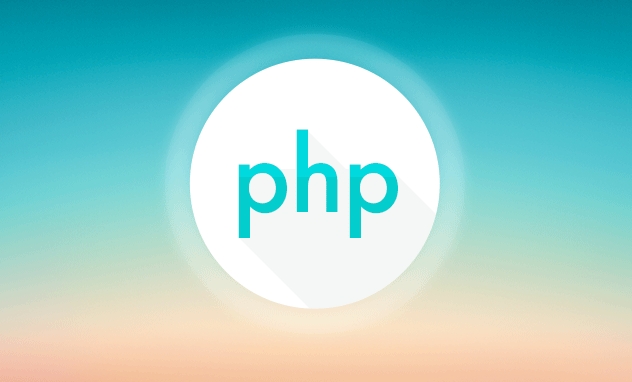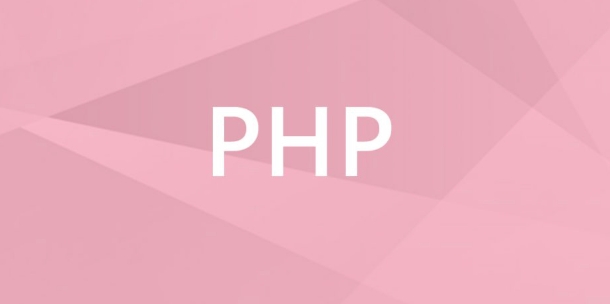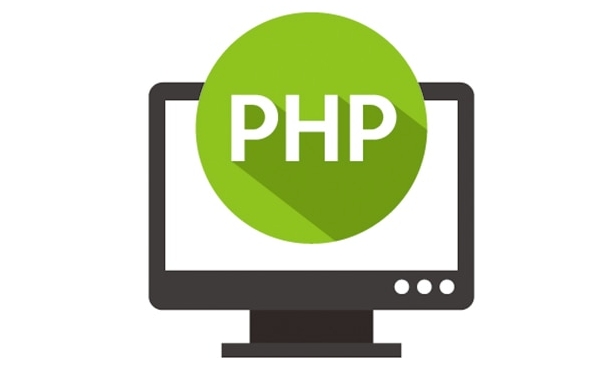 Backend Development
Backend Development
 PHP Tutorial
PHP Tutorial
 One-click deployment of a PHP environment: Tool recommendations and tutorials
One-click deployment of a PHP environment: Tool recommendations and tutorials
One-click deployment of a PHP environment: Tool recommendations and tutorials
Jun 28, 2025 am 02:07 AMOne-click deployment refers to the use of pre-packaged software to complete the installation and configuration of the development environment with minimal user input, which is especially suitable for beginners or to quickly establish a local development environment. Common PHP one-click deployment tools include XAMPP (cross-platform), WAMP (Windows), MAMP (macOS), and Laragon (lightweight and support multiple PHP versions). Taking XAMPP as an example, the settings are to download the installation package, select component installation, start Apache and MySQL services, and access localhost through the browser to test whether the environment is successful. Put the PHP file into the htdocs folder and execute it. Laragon provides a more modern interface, supporting rapid creation of virtual hosts and switching PHP versions. In terms of maintenance, it is recommended to regularly update tools, backup databases and file files, avoid modifying core settings, and use virtual hosts to simulate real environments.

Setting up a PHP environment usually involves installing multiple components like PHP, Apache/Nginx, and MySQL. However, one-click deployment tools simplify this process by bundling these components into an all-in-one package. This makes it easier for developers to get started without manually configuring each part.

What is one-click deployment?
One-click deployment refers to using pre-packaged software that installs and configures a complete development environment with minimal user input. These tools are especially useful for beginners or when setting up a local development environment quickly.

Some of the most popular tools for one-click deployment of a PHP environment include:
- XAMPP – A cross-platform solution that includes Apache, MySQL, PHP, and Perl.
- WAMP – Specifically designed for Windows, WAMP stands for Windows, Apache, MySQL, and PHP.
- MAMP – Similar to WAMP but tailored for macOS users.
- Laragon – A lightweight and fast alternative for Windows, supporting multiple PHP versions and databases.
Each of these tools offer a simple interface to start, stop, and manage services without deep system configuration.

How to use XAMPP for PHP setup
XAMPP is one of the most widely used tools for deploying PHP environments quickly. Here's how to set it up:
- Download XAMPP : Go to the official XAMPP website and download the version suitable for your operating system.
- Install the package : Run the installer and choose the components you want to install (Apache, MySQL, PHP, etc.). You can stick with the default options unless you have specific needs.
- Start Apache and MySQL : Open the XAMPP control panel, then click "Start" next to Apache and MySQL. Once running, you'll see a green status indicator.
- Test your installation : Open a browser and go to
http://localhost. If the XAMPP welcome page appears, your environment is working correctly. - Place your PHP files : Put your PHP scripts in the
htdocsfolder inside the XAMPP installation directory. Access them viahttp://localhost/your-folder-name.
This setup allows immediate testing of PHP scripts without worrying about server configurations.
Using Laragon for faster deployment
If you're on Windows and prefer a more modern and lightweight option, Laragon is a great choice. It supports multiple PHP versions, databases like MySQL and PostgreSQL, and even comes with built-in tools like Composer and Node.js.
Here's how to deploy PHP using Laragon:
- Download and install : Grab the latest version from the Laragon website . The installation is straightforward—just follow the prompts.
- Launch Laragon : After installation, open the application. You'll see a clean UI with buttons to start/stop services.
- Start Apache and MySQL : Click "Start All" or individually start Apache and MySQL if needed.
- Access localhost : Open your browser and go to
http://localhost. You should see a default welcome page. - Create projects easily : Laragon lets you create new projects with a single command in its terminal. For example:
laragon create myproject
This creates a new virtual host at
http://myproject.test.
Laragon also supports quick switching between PHP versions and has a built-in terminal, making it ideal for developers who frequently test different settings.
Tips for maintaining your one-click PHP environment
Once your environment is running, there are a few things to keep in mind:
- Keep your tool updated to ensure compatibility and security.
- Regularly back up your database and project files, especially before updating or changing configurations.
- Avoid modifying core configuration files unless necessary, as this might break the setup.
- Use virtual hosts whenever possible to simulate real web environments locally.
These small habits help maintain a smooth and stable development workflow.
Basically that's it.
The above is the detailed content of One-click deployment of a PHP environment: Tool recommendations and tutorials. For more information, please follow other related articles on the PHP Chinese website!

Hot AI Tools

Undress AI Tool
Undress images for free

Undresser.AI Undress
AI-powered app for creating realistic nude photos

AI Clothes Remover
Online AI tool for removing clothes from photos.

Clothoff.io
AI clothes remover

Video Face Swap
Swap faces in any video effortlessly with our completely free AI face swap tool!

Hot Article

Hot Tools

Notepad++7.3.1
Easy-to-use and free code editor

SublimeText3 Chinese version
Chinese version, very easy to use

Zend Studio 13.0.1
Powerful PHP integrated development environment

Dreamweaver CS6
Visual web development tools

SublimeText3 Mac version
God-level code editing software (SublimeText3)

Hot Topics
 What are some best practices for versioning a PHP-based API?
Jun 14, 2025 am 12:27 AM
What are some best practices for versioning a PHP-based API?
Jun 14, 2025 am 12:27 AM
ToversionaPHP-basedAPIeffectively,useURL-basedversioningforclarityandeaseofrouting,separateversionedcodetoavoidconflicts,deprecateoldversionswithclearcommunication,andconsidercustomheadersonlywhennecessary.StartbyplacingtheversionintheURL(e.g.,/api/v
 How do I implement authentication and authorization in PHP?
Jun 20, 2025 am 01:03 AM
How do I implement authentication and authorization in PHP?
Jun 20, 2025 am 01:03 AM
TosecurelyhandleauthenticationandauthorizationinPHP,followthesesteps:1.Alwayshashpasswordswithpassword_hash()andverifyusingpassword_verify(),usepreparedstatementstopreventSQLinjection,andstoreuserdatain$_SESSIONafterlogin.2.Implementrole-basedaccessc
 What are the differences between procedural and object-oriented programming paradigms in PHP?
Jun 14, 2025 am 12:25 AM
What are the differences between procedural and object-oriented programming paradigms in PHP?
Jun 14, 2025 am 12:25 AM
Proceduralandobject-orientedprogramming(OOP)inPHPdiffersignificantlyinstructure,reusability,anddatahandling.1.Proceduralprogrammingusesfunctionsorganizedsequentially,suitableforsmallscripts.2.OOPorganizescodeintoclassesandobjects,modelingreal-worlden
 What are weak references (WeakMap) in PHP, and when might they be useful?
Jun 14, 2025 am 12:25 AM
What are weak references (WeakMap) in PHP, and when might they be useful?
Jun 14, 2025 am 12:25 AM
PHPdoesnothaveabuilt-inWeakMapbutoffersWeakReferenceforsimilarfunctionality.1.WeakReferenceallowsholdingreferenceswithoutpreventinggarbagecollection.2.Itisusefulforcaching,eventlisteners,andmetadatawithoutaffectingobjectlifecycles.3.YoucansimulateaWe
 How can you handle file uploads securely in PHP?
Jun 19, 2025 am 01:05 AM
How can you handle file uploads securely in PHP?
Jun 19, 2025 am 01:05 AM
To safely handle file uploads in PHP, the core is to verify file types, rename files, and restrict permissions. 1. Use finfo_file() to check the real MIME type, and only specific types such as image/jpeg are allowed; 2. Use uniqid() to generate random file names and store them in non-Web root directory; 3. Limit file size through php.ini and HTML forms, and set directory permissions to 0755; 4. Use ClamAV to scan malware to enhance security. These steps effectively prevent security vulnerabilities and ensure that the file upload process is safe and reliable.
 How can you interact with NoSQL databases (e.g., MongoDB, Redis) from PHP?
Jun 19, 2025 am 01:07 AM
How can you interact with NoSQL databases (e.g., MongoDB, Redis) from PHP?
Jun 19, 2025 am 01:07 AM
Yes, PHP can interact with NoSQL databases like MongoDB and Redis through specific extensions or libraries. First, use the MongoDBPHP driver (installed through PECL or Composer) to create client instances and operate databases and collections, supporting insertion, query, aggregation and other operations; second, use the Predis library or phpredis extension to connect to Redis, perform key-value settings and acquisitions, and recommend phpredis for high-performance scenarios, while Predis is convenient for rapid deployment; both are suitable for production environments and are well-documented.
 What are the differences between == (loose comparison) and === (strict comparison) in PHP?
Jun 19, 2025 am 01:07 AM
What are the differences between == (loose comparison) and === (strict comparison) in PHP?
Jun 19, 2025 am 01:07 AM
In PHP, the main difference between == and == is the strictness of type checking. ==Type conversion will be performed before comparison, for example, 5=="5" returns true, and ===Request that the value and type are the same before true will be returned, for example, 5==="5" returns false. In usage scenarios, === is more secure and should be used first, and == is only used when type conversion is required.
 How do I perform arithmetic operations in PHP ( , -, *, /, %)?
Jun 19, 2025 pm 05:13 PM
How do I perform arithmetic operations in PHP ( , -, *, /, %)?
Jun 19, 2025 pm 05:13 PM
The methods of using basic mathematical operations in PHP are as follows: 1. Addition signs support integers and floating-point numbers, and can also be used for variables. String numbers will be automatically converted but not recommended to dependencies; 2. Subtraction signs use - signs, variables are the same, and type conversion is also applicable; 3. Multiplication signs use * signs, which are suitable for numbers and similar strings; 4. Division uses / signs, which need to avoid dividing by zero, and note that the result may be floating-point numbers; 5. Taking the modulus signs can be used to judge odd and even numbers, and when processing negative numbers, the remainder signs are consistent with the dividend. The key to using these operators correctly is to ensure that the data types are clear and the boundary situation is handled well.





